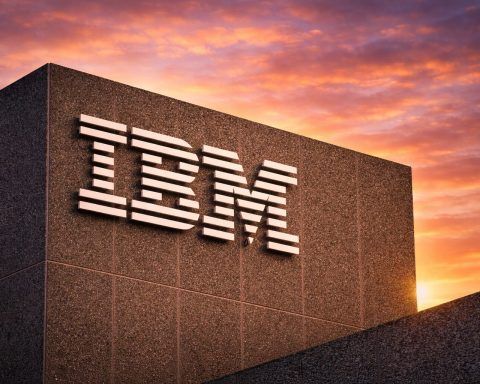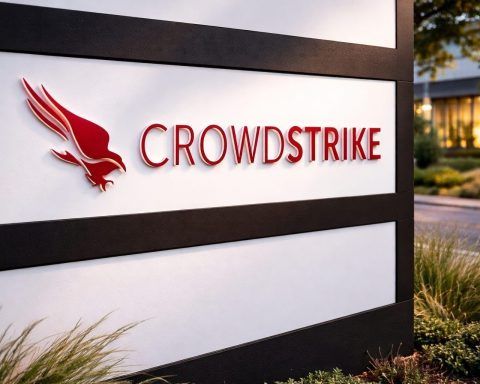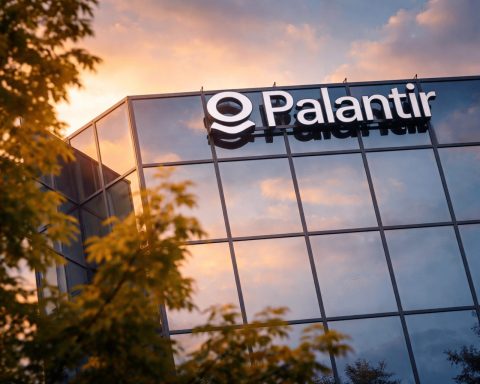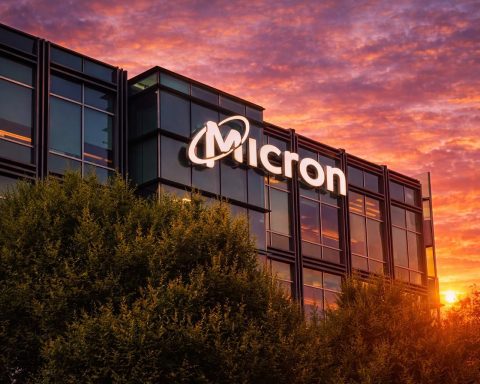- USC researchers demonstrated that a neglected quasiparticle dubbed ‘neglecton’ added to Ising anyons enables universal topological quantum computing, published in Nature Communications.
- University of Sydney researchers realized a universal logical gate set for GKP qubits encoded in a single trapped ytterbium ion, effectively encoding two logical qubits.
- Chalmers University (Sweden) and Aalto University (Finland) unveiled a magnetism-based quantum material that protects qubits from noise using ordinary magnetic interactions, reported in Physical Review Letters.
- Ben-Gurion University researchers used levitated nanodiamonds in a matter-wave interferometer to place million-atom diamonds in quantum superposition separated by nanometers.
- A Berlin team led by Jens Eisert achieved a doubly-exponential speedup in quantum state tomography for bosonic Gaussian states, with nearly constant sample complexity using adaptive heterodyne measurements.
- IBM demonstrated that a 5-qubit processor with Twirled Readout Error eXtinction (T-REx) outperformed a 156-qubit device on a chemistry problem, achieving ground-state energy estimates 10× more accurate.
- DARPA announced HARQ, the Heterogeneous Architectures for Quantum program, to pursue scalable, high-risk, high-reward quantum hardware architectures with proposal abstracts due this fall.
- Strangeworks announced on August 20, 2025 that it would acquire Quantagonia, creating a combined quantum/HPC cloud platform backed by IBM and Hitachi.
- IonQ announced that its patent portfolio surpassed 1,000 patents and applications (about 1,060 total) in August 2025, including portable quantum memory for long-distance secure links and photonic integration, aided by the acquisition of Oxford Ionics.
- QuamCore, a Tel Aviv stealth startup, raised $26 million in Series A funding plus a $4 million government grant to pursue a 1,000,000-qubit superconducting quantum computer.
In the past 48 hours, quantum technology has seen rapid-fire advances across science labs, industry boardrooms, and government offices worldwide. From a “forgotten” particle enabling new computing feats to major companies doubling down on quantum investments, the field is buzzing. Below is a comprehensive roundup of notable quantum-related news from August 24–25, 2025, spanning scientific breakthroughs, corporate moves, policy initiatives, funding deals, and key events – with expert insights on what it all means.
Scientific and Academic Breakthroughs
- ‘Forgotten’ Particle Unlocks Topological Quantum Computing: Mathematicians at University of Southern California revealed that a once-discarded quasiparticle – dubbed the “neglecton” – could be the missing piece for universal topological quantum computing [1]. By adding a single stationary neglecton to a system of Ising anyons, the team showed these otherwise limited anyons can perform all logic gates through braiding alone [2]. “It’s like finding treasure in what everyone else thought was mathematical garbage,” said USC professor Aaron Lauda, noting how an object considered mere “quantum trash” enabled a major breakthrough [3]. The work, published in Nature Communications, opens a new path to building fault-tolerant quantum computers from exotic quasiparticles.
- Single-Atom Logic Gate Slashes Qubit Overhead: Quantum scientists at the University of Sydney demonstrated a new entangling logic gate within a single atom that drastically cuts the number of physical qubits needed per logical qubit [4]. Using the Gottesman–Kitaev–Preskill (GKP) error-correcting code – a “Rosetta stone” of quantum computing – they encoded two error-protected logical qubits in one trapped ytterbium ion and entangled them, achieving a universal gate set in a lone atom [5]. “Our experiments have shown the first realisation of a universal logical gate set for GKP qubits,” said Dr. Tingrei Tan, lead author on the Nature Physics study [6]. This hardware-efficient approach is hailed as a foundation to scale quantum processors without the usual qubit overhead, potentially easing the engineering nightmare of building large-scale quantum computers [7].
- Magnetism Yields Robust Qubits in New Material: A Sweden–Finland research team (Chalmers University and Aalto University) unveiled a quantum material that naturally protects qubits from noise using ordinary magnetism [8]. Described in Physical Review Letters, the material uses common magnetic interactions (instead of exotic spin–orbit coupling) to create robust topological quantum states resilient to environmental disturbances [9]. “This is a completely new type of exotic quantum material that can maintain its quantum properties when exposed to external disturbances. It can contribute to the development of quantum computers robust enough to tackle quantum calculations in practice,” said Guangze Chen, Chalmers University postdoc and lead author [10]. By “baking with everyday ingredients” like magnetism rather than rare physics, the work broadens the hunt for inherently error-resilient qubit platforms [11].
- Levitated Nanodiamonds Probe Quantum Gravity: Pushing the boundary of quantum mechanics and gravity, physicists at Ben-Gurion University (Israel) advanced a matter-wave interferometer using levitated nanodiamonds [12]. By precisely controlling the spins of nitrogen-vacancy centers in nanodiamond crystals, the team put million-atom diamonds into quantum superposition just nanometers apart [13]. This achievement – splitting an object visible under a microscope into two quantum states separated by mere nanometers – marks a significant step toward testing quantum gravity in new regimes [14]. The researchers aim to use this system to probe fundamental physics (e.g. the equivalence principle) and even hunt for exotic phenomena like dark matter interactions with ultra-sensitive quantum sensors [15].
- Record Speedup in Quantum State Tomography: In Berlin, a team led by Jens Eisert introduced an algorithm that achieves a doubly-exponential improvement in quantum state tomography for high-dimensional states [16]. Their new method efficiently reconstructs bosonic Gaussian quantum states, and remarkably its accuracy does not depend on the state’s energy or photon count [17]. Using adaptive heterodyne measurements, the algorithm keeps the sample complexity nearly constant regardless of how “squeezed” or energetic the state is [18]. This breakthrough overcomes a major limitation of prior techniques, meaning even highly populated light states can be characterized with far fewer measurements. It promises faster, more scalable quantum state characterization – critical for precision metrology and verifying quantum processors – by dramatically reducing the measurements needed for complex states [19].
- Tiny Qubits Beat Big Qubits via Error Mitigation: IBM researchers reported a striking result: using clever error mitigation, a 5-qubit quantum processor outperformed a cutting-edge 156-qubit device on a chemistry problem [20]. The team applied a software technique called “Twirled Readout Error eXtinction” (T-REx) to reduce noise in a Variational Quantum Eigensolver experiment, achieving ground-state energy estimates 10× more accurate than those of the much larger, unmitigated system [21]. In other words, a small quantum chip with high-fidelity operations (plus smart error correction) beat a far bigger quantum computer plagued by noise. The result underscores that improving qubit quality can matter more than sheer quantity on today’s devices [22]. It also suggests a promising near-term path: optimized error reduction and calibration might unlock better performance from quantum hardware without simply racing to add more qubits [23].
- Quantum Control via Exceptional Points: Researchers in New Zealand (Dodd-Walls Centre, University of Otago) and Austria demonstrated a novel way to control hybrid quantum systems by harnessing a mathematical singularity called an “exceptional point.” In a study published in Nature Physics, the team encircled an exceptional point in a cavity magnon-polariton system, enabling coherent transfer of excitations between coupled magnon–photon modes [24] [25]. Notably, driving the system through the exceptional point prepared it in an equal superposition of modes [26]. This new method of using engineered loss as a control tool offers a way to manipulate hybrid quantum states for computing and sensing. The researchers plan to extend the technique into the quantum regime, eyeing applications in quantum networks and state preparation [27].
- Quantum Robots? Fujitsu’s 64-Qubit Posture Optimization: In Japan, a collaboration between Shibaura Institute of Technology, Waseda University, and Fujitsu announced a breakthrough in using quantum computing for robot control [28]. They developed an algorithm that efficiently calculates a humanoid robot’s inverse kinematics (joint angles for a target position) by encoding each robot link’s orientation as a qubit and leveraging quantum entanglement [29] [30]. Tests on Fujitsu’s 64-qubit quantum machine (co-developed with RIKEN) showed up to 43% error reduction with fewer computations compared to classical methods [31]. By entangling joint qubit representations, the method reproduces the influence of parent joints on child joints, greatly speeding up convergence to a solution [32] [33]. As quantum hardware improves, this hybrid quantum-classical approach could enable real-time control of complex, multi-jointed robots – a step toward more agile humanoid robots and autonomous machines [34] [35].
Industry Announcements (Major Players & Startups)
- Strangeworks Acquires Quantagonia (Quantum M&A): In a sign of consolidation in the quantum industry, Austin-based startup Strangeworks acquired Germany’s Quantagonia, an optimization and AI software firm, in a deal announced August 20 [36]. The merger combines Strangeworks’ user-friendly quantum/HPC cloud platform with Quantagonia’s hardware-agnostic HybridSolver engine, aiming to create a “global leader” in applied quantum computing solutions [37]. The combined company – backed by investors like IBM and Hitachi – will offer enterprise clients one-stop tools for tough problems (scheduling, logistics, etc.) using whichever backend (quantum, classical or hybrid) works best [38]. Analysts hailed the move as a milestone for the maturing quantum sector. “Acquisitions that leverage quantum’s performance to solve real-world problems are the next milestone in the maturation of the QC sector,” noted Hyperion Research analyst Bob Sorensen, predicting more such strategic mergers as the field grows [39]. (Strangeworks’ CEO William “Whurley” Hurley welcomed Quantagonia’s team, and Quantagonia’s CEO Dirk Zechiel said joining forces will let them scale and serve more customers globally [40] [41].)
- IonQ Surpasses 1,000+ Patents Milestone: Maryland-based IonQ, a leading builder of trapped-ion quantum computers, announced that its intellectual property portfolio now exceeds 1,000 total patents and patent applications [42]. This milestone, reached with a batch of new U.S. patent grants in August, solidifies IonQ’s technical leadership with a broad “patent moat.” The latest patents include innovations in quantum networking (e.g. a portable quantum memory for long-distance secure links) and photonic integration for quantum devices [43]. “IonQ’s robust and growing portfolio of patents is a direct result of the strategy set forth years ago – developing and owning quantum technologies across multiple industries,” said IonQ CEO Niccolò de Masi, adding that this IP will help build “scalable, high-performance, cost effective” quantum systems faster [44] [45]. The company noted its patent count (around 1,060 including pending applications) was bolstered by acquisitions like its pending takeover of UK-based Oxford Ionics [46] [47]. A strong patent position is seen as giving IonQ an edge in the global race toward commercial quantum advantage [48].
- Quantum Lab Alliance Spans U.S. and Europe: Cross-border partnerships are also advancing quantum R&D. U.S.-based startup Entanglement, Inc. and Austria’s Maybell Quantum announced a strategic alliance to outfit cutting-edge quantum laboratories with state-of-the-art cryogenic systems [49]. Under an MOU signed August 22, Entanglement will equip its global quantum labs – including a new hub in Vienna – with Maybell’s advanced dilution refrigerators and cryogenic control hardware [50] [51]. In return, Maybell gains a high-profile customer and collaborator for its ultra-cold tech. “Maybell builds the best cryogenic systems for quantum experiments and will power our labs globally,” Entanglement CEO Jason Turner said of the tie-up [52]. This alliance underscores the growing demand for specialized infrastructure (from cryogenics to control electronics) needed to scale up quantum computers and sensors. Companies are increasingly joining forces to ensure critical components – like reliable fridges for qubits – keep pace with quantum breakthroughs [53].
Government & Policy: Quantum Initiatives Around the World
- DARPA’s Big Bet on Scalable Quantum: The U.S. Defense Advanced Research Projects Agency (DARPA) announced a major new program, Heterogeneous Architectures for Quantum (HARQ), seeking “revolutionary advances” in quantum computing beyond the current state of the art [54]. Rather than incremental improvements, HARQ calls for high-risk, high-reward research into leap-ahead quantum hardware architectures – from novel qubit interconnects and transducers to modular, distributed quantum processors and hybrid quantum-classical algorithms [55]. The goal is to overcome today’s scaling limits and pave the way to practical, deployable quantum computers [56]. With proposal abstracts due this fall, DARPA explicitly encourages bold ideas that “accelerate progress toward scalable, secure quantum computing” for long-term national security needs [57]. The HARQ program reflects the Pentagon’s growing investment in quantum tech to secure a strategic edge in computing and cryptography [58].
- Defense Eyes Quantum – Global Collaborations: Military and intelligence communities worldwide are ramping up quantum efforts. On August 22, Asia-based quantum firm Orientom announced a partnership with U.S. AI company Deep Insight to co-develop quantum-powered AI solutions for defense and intelligence applications [59]. The collaboration will explore quantum algorithms to enhance military decision-making, logistics, and security – an area of rising interest as armed forces seek computational advantages [60]. This follows broader trends: defense agencies across the U.S., Europe, and Asia are funding joint R&D to harness quantum for ultra-secure communications, optimization of operations, and advanced simulations [61]. Western intelligence reports have warned that adversaries’ rapid progress in quantum sensing and encryption could threaten the tech balance of power [62]. Governments are responding by launching new quantum programs, public-private partnerships, and research hubs to avoid falling behind in what’s seen as a critical race [63].
- Australia Invests in Quantum Defense Tech: On August 25, Australia’s Department of Defence announced new contracts under its Advanced Strategic Capabilities Accelerator (ASCA) to boost sovereign quantum technology. Three projects were awarded a total of AU$9 million (~US$5.8M) to develop disruptive capabilities, adding to a AU$60M program funding emerging tech over three years [64]. Among the recipients are CSIRO (to develop quantum machine learning algorithms for detecting adversarial attacks) and Silicon Quantum Computing (to build a home-grown quantum-enhanced machine learning processor for defense) [65] [66]. “Through [ASCA], the Government is aligning to Defence’s highest innovation priorities to support research and capability development on home soil,” said Australia’s Chief Defence Scientist Prof. Tanya Monro, emphasizing leveraging local industry and academia [67]. Harnessing Aussie innovators will ensure “Defence is on the front foot at a time of rapid technological development,” Monro added, aiming to give warfighters an “asymmetric advantage” via quantum and other advanced tech [68] [69].
Notable Funding Rounds & Investments
- Morgan Stanley Bets on IonQ: In a notable signal of Wall Street’s interest, Morgan Stanley disclosed a 7.10% ownership stake in IonQ, Inc. – one of the few publicly traded quantum computing companies [70]. According to an SEC filing, the financial giant holds 18.64 million shares of IonQ, an increase of 290% over the prior quarter’s holdings [71]. This sizable stake positions Morgan Stanley as a passive but significant investor in IonQ. The move by a major bank “may signal increasing institutional interest in the quantum computing sector,” observers noted [72]. Heavy institutional ownership can provide credibility and stability for emerging tech firms, and Morgan Stanley’s disclosure adds to the overall market confidence in IonQ’s long-term prospects [73].
- QuamCore’s “Million-Qubit” Moonshot: In Tel Aviv, stealth-mode startup QuamCore emerged from the shadows with an audacious plan to build a million-qubit superconducting quantum computer. The company announced a $26 million Series A funding round (plus a $4M government grant) to pursue a single-cryostat architecture that it claims can scale to 1,000,000 qubits – far above today’s few-hundred qubit records [74]. “From day one, we focused on the minimum viable system to unlock real-world quantum advantage – and that number is 1 million qubits,” said QuamCore CEO Alon Cohen, whose team claims to have reimagined chip design to remove current scaling bottlenecks [75]. Many experts are skeptical of the “million-qubit” boast, given that the largest quantum processors currently have only a few hundred functional qubits [76]. Still, the hefty funding and bold vision signal investors’ growing confidence that transformative leaps in quantum computing are achievable in the long term [77].
- Startup Seed Funding Flows: Investor appetite for quantum startups continues. For example, Alabama-based Nullspace announced a $2.5 million seed round to advance its next-generation simulation software for radio-frequency (RF) and quantum hardware design [78]. Nullspace’s tools bridge high-end RF engineering and quantum computing, enabling extremely large systems (like complex ion traps for quantum processors) to be modeled with high fidelity – a capability attracting interest in aerospace, defense, and AI hardware markets [79]. The round was led by deep-tech VC firm Fathom Fund and includes strategic angels [80] [81]. The fresh capital will expand the engineering team and speed up product development, aiming to ease design bottlenecks in both quantum and classical advanced hardware [82] [83]. Such early-stage investments show that not only big quantum players, but also enabling-tech startups, are drawing funding as the ecosystem matures.
(Note: Beyond venture capital, government funding is boosting startups too – e.g. Canada’s Department of National Defence just granted C$1M to Photonic Inc. for quantum networking R&D [84] – further fueling innovation.)
Events, Conferences, and Publications
- Breakthroughs Hit the Journals: Many of the scientific advances above were unveiled through high-profile publications. The USC “neglecton” research appeared in Nature Communications, while the Sydney single-atom GKP logic gate was reported in Nature Physics [85] [86]. Likewise, the magnon-polariton control came out in Nature Physics, and the magnetic topological material in Phys. Rev. Lett.. The flurry of papers in top journals underscores the academic momentum propelling quantum tech forward. It also reflects 2025’s status as the International Year of Quantum Science and Technology, marking 100 years since the birth of quantum mechanics – an apt backdrop for these breakthroughs.
- Global Quantum Gatherings: The community is converging to discuss these developments and next steps. In Washington, D.C., a federal “Quantum Summit” on August 27 will bring together top government leaders to discuss the state of quantum technology, the urgency of post-quantum cybersecurity, and strategies for federal adoption [87]. Just days later, IEEE Quantum Week 2025 kicks off August 31 in Albuquerque, New Mexico [88], featuring hundreds of researchers, engineers, and entrepreneurs. This conference – the IEEE International Conference on Quantum Computing and Engineering – will bridge the science and industry of quantum, with 9 world-class keynotes, 260+ technical papers, and dozens of workshops and panels on the agenda [89] [90]. Such events, alongside countless workshops and startup forums worldwide, highlight the global drive to accelerate quantum R&D and collaboration.
Bottom Line: The end of August 2025 has showcased quantum tech’s multi-front momentum. Lab researchers are achieving “quantum leaps” in capability, while companies and governments are making big moves to capitalize on and shape this progress. Experts urge a balance of excitement and realism: many breakthroughs are early-stage or still compete with classical methods, yet each step forward is expanding the envelope. “We see quantum as the next frontier for computation… it’s going to unlock enormous financial benefits,” says Emily Fontaine, head of IBM Ventures, noting that funding for quantum startups has surged and that IBM now puts quantum on “equal footing” with AI in its strategy [91]. At the same time, industry analysts observe a maturing sector where pragmatic efforts to solve real-world problems (like the Strangeworks–Quantagonia merger) go hand-in-hand with fundamental research advances [92]. The consensus is that quantum technology is steadily advancing on multiple fronts – scientific, industrial, and governmental – but realizing its full promise will require sustained innovation, smart policy support, and perhaps a few more breakthrough moments in the years ahead [93].
References
1. ts2.tech, 2. ts2.tech, 3. ts2.tech, 4. ts2.tech, 5. ts2.tech, 6. ts2.tech, 7. ts2.tech, 8. ts2.tech, 9. ts2.tech, 10. ts2.tech, 11. ts2.tech, 12. ts2.tech, 13. ts2.tech, 14. ts2.tech, 15. ts2.tech, 16. ts2.tech, 17. ts2.tech, 18. ts2.tech, 19. ts2.tech, 20. ts2.tech, 21. ts2.tech, 22. ts2.tech, 23. ts2.tech, 24. quantumcomputingreport.com, 25. quantumcomputingreport.com, 26. quantumcomputingreport.com, 27. quantumcomputingreport.com, 28. global.fujitsu, 29. global.fujitsu, 30. global.fujitsu, 31. global.fujitsu, 32. global.fujitsu, 33. global.fujitsu, 34. global.fujitsu, 35. global.fujitsu, 36. ts2.tech, 37. ts2.tech, 38. ts2.tech, 39. ts2.tech, 40. strangeworks.com, 41. strangeworks.com, 42. ts2.tech, 43. ts2.tech, 44. ts2.tech, 45. investors.ionq.com, 46. ts2.tech, 47. investors.ionq.com, 48. ts2.tech, 49. ts2.tech, 50. ts2.tech, 51. quantumcomputingreport.com, 52. ts2.tech, 53. ts2.tech, 54. ts2.tech, 55. ts2.tech, 56. ts2.tech, 57. ts2.tech, 58. ts2.tech, 59. ts2.tech, 60. ts2.tech, 61. ts2.tech, 62. ts2.tech, 63. ts2.tech, 64. www.defence.gov.au, 65. www.defence.gov.au, 66. www.defence.gov.au, 67. www.defence.gov.au, 68. www.defence.gov.au, 69. www.defence.gov.au, 70. quantumcomputingreport.com, 71. quantumcomputingreport.com, 72. quantumcomputingreport.com, 73. quantumcomputingreport.com, 74. ts2.tech, 75. ts2.tech, 76. ts2.tech, 77. ts2.tech, 78. ts2.tech, 79. ts2.tech, 80. quantumcomputingreport.com, 81. quantumcomputingreport.com, 82. quantumcomputingreport.com, 83. quantumcomputingreport.com, 84. quantumcomputingreport.com, 85. ts2.tech, 86. ts2.tech, 87. events.nextgov.com, 88. qce.quantum.ieee.org, 89. qce.quantum.ieee.org, 90. qce.quantum.ieee.org, 91. ts2.tech, 92. ts2.tech, 93. ts2.tech










